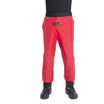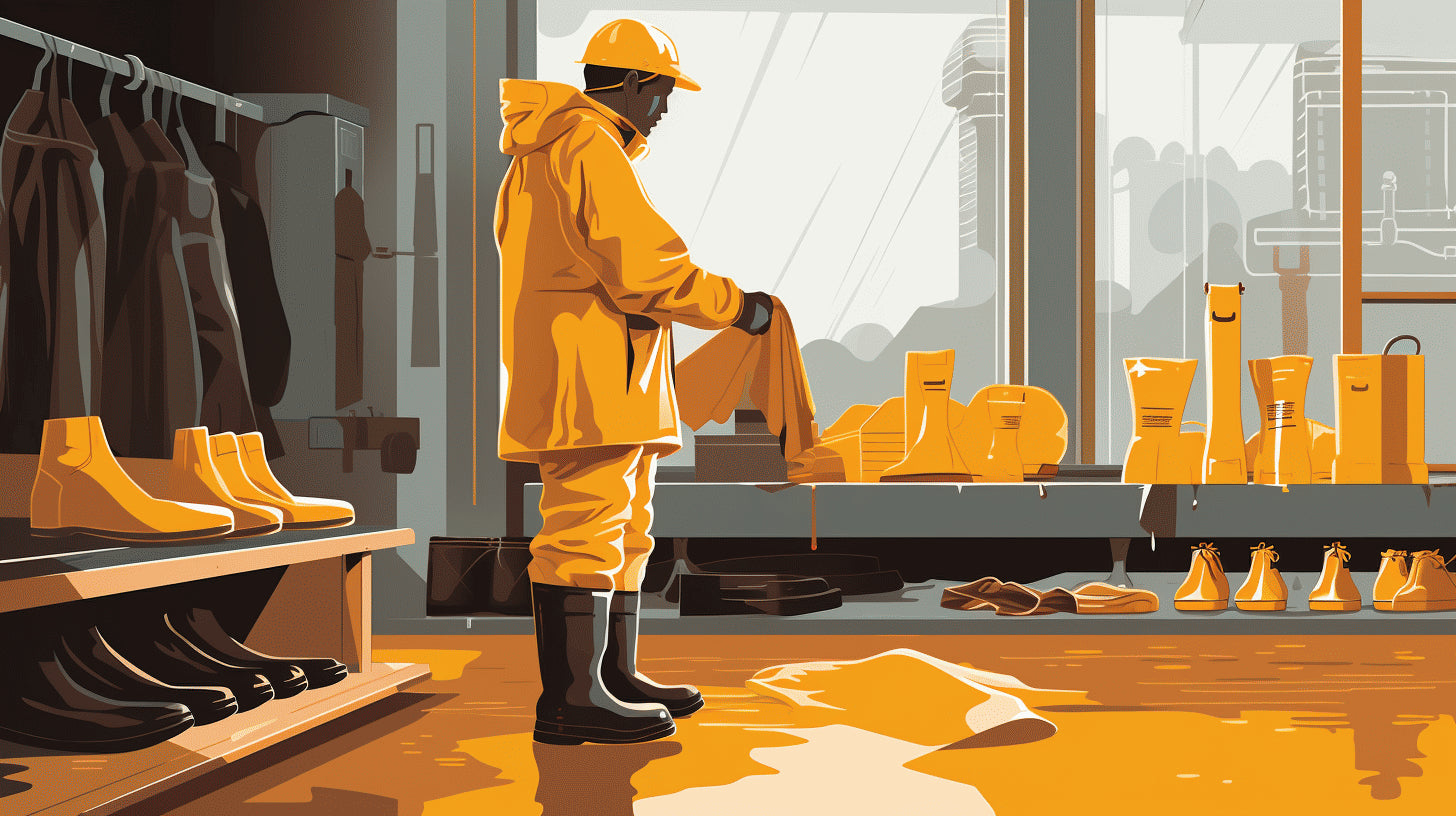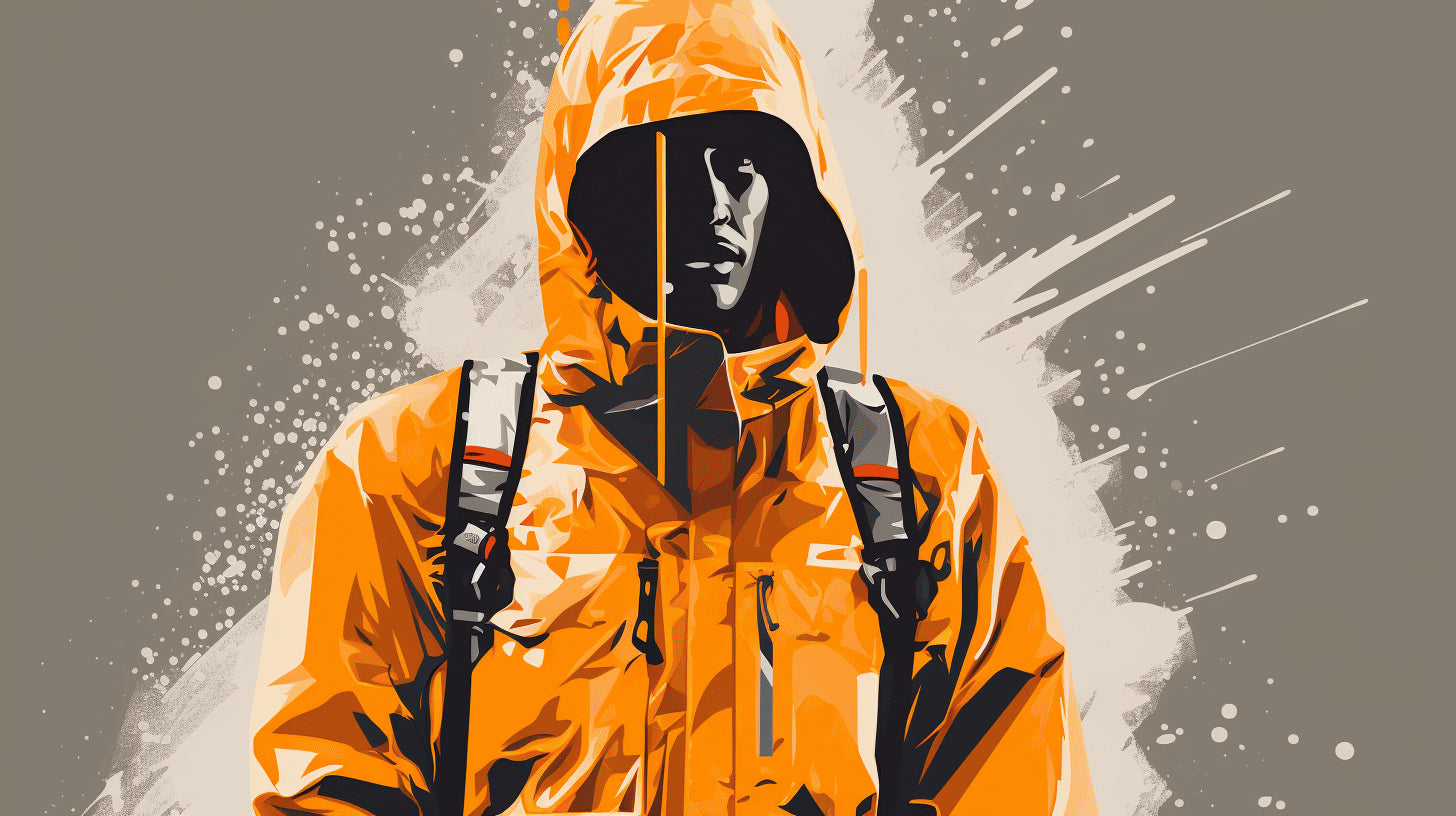Rain gear. A potent savior during a downpour that enables you to laugh in the face of a storm. If a cloud decides to burst open above your head, this waterproof ally keeps you dry and warm. But not all rain gear is created equal. Finding a rain coat that successfully keeps the rain out, but doesn't rip/run/amass holes from everyday use – now that's the trick.
In this immersive guide, we delve into the art of selecting rain gear that's both waterproof and tear-resistant, ensuring you stay dry and snug in torrential rain with undaunted functionality. From the various factors to consider when making your selection, exploring different materials used to create effective rain gear, to choosing the right gear for your specific needs, expect a detailed excavation. Curated for both the uninitiated buyer and experienced outdoorsy folk, this guide aims to navigate you towards your perfect, watertight and resilient, rain gear.
Important Factors to Consider
When it comes to choosing the perfect outdoor gear, there are several critical factors to consider for an informed decision. Carefully taking into account these elements can make the difference between an item that enhances your outdoor experience and a regrettable purchase.
Waterproofing
Rain or shine, it's vital to be prepared. Ensuring that your gear is waterproof is often a high priority for outdoor enthusiasts. Materials treated with hydrophobic substances repel water and prevent moisture from seeping in, keeping you dry and comfortable.
Tear Resistance
One of the crucial factors that individuals often overlook is the tear resistance of outdoor gear. When trekking through rugged terrain or exploring vast landscapes, it's easy for apparel and equipment to get caught on branches or rocks. Therefore, investing in items with high tear resistance can offer a long-lasting solution.
Breathability
While it's essential for your gear to be waterproof and tear-resistant, it's equally crucial for it to be breathable. After all, activities like hiking, rock climbing, or camping can get physically demanding leading to increased perspiration. Breathable fabrics allow sweat to evaporate, keeping you cool and preventing discomfort.
Weight
Heavier isn't always better. Especially when it comes to outdoor gear, the weight can have a significant impact on your comfort and mobility. Lightweight options offer convenience and portability without compromising functionality.
Durability
Last but not least, durability is key when selecting suitable outdoor gear. Products with strong construction, robust materials, and quality craftsmanship are more likely to withstand the test of time and the harsh conditions often encountered outdoors.
To sum things up, when selecting outdoor gear, don't just look at the price tag. Think about waterproofing, tear resistance, breathability, weight, and most importantly, durability. These factors will play a big role in your overall comfort, functionality, and satisfaction. Happy exploring!
Materials for Waterproof and Tear-Resistant Rain Gear
When the skies open up and the rain pours down, having quality, reliable, and waterproof rain gear is essential for staying dry and comfortable. Not all rain gear is made equal, though. Different materials offer varying levels of waterproofing and durability. Let's delve into the details about some of the best materials used in making rain gear.
Patagonia Torrentshell 3L
A perfect example of effective rainwear is the Patagonia Torrentshell 3L, made using a 3-layer fabric system. This technology not only ensures a waterproof barrier but also breathability, thereby promoting comfort despite the harsh weather conditions.
- The 3-layer fabric system consists of:
- An outer layer that repels water
- A middle layer that prevents water from seeping through
- An inner layer for enhanced breathability
The combination of these layers provides absolute water resistance without compromising the gear's ability to breathe, thereby ensuring the wearer stays dry both from the rain and perspiration.
Rubberized/PVC rain gear
Rubberized or PVC rain gear is another widely utilized material in the production of rain garments. A classic example of this is the traditional fisherman's slicker.
- Advantages:
- Exceptional water resistance
- High durability
However, rubberized or PVC materials don't breathe well. This means they can cause perspiration, leading to discomfort during extended use.
Gore-Tex
Gore-Tex is a top-rated material for rain gear, offering a matchless combination of waterproofing, breathability, and lightweight design. This material contains a unique waterproof membrane containing microscopic pores which are smaller than a water droplet but larger than a water vapor molecule, stopping water ingress while allowing perspiration to escape.
- Most notable features:
- Extremely water repellent
- Highly breathable
- Remarkably light and comfortable
While it's a more expensive option, Gore-Tex's superior performance makes it an excellent investment for those who spend a lot of time outdoors.
DWR coatings
Many rain gear options utilize DWR, or Durable Water Repellent, coatings. These are special treatments applied to the fabric surface, making it water-resistant.
- Key characteristics of DWR coatings include:
- Being hydrophobic: They repel water instead of absorbing it.
- Increasing the lifespan of the garments: By protecting the material from becoming saturated, they help the gear resist wear and tear.
Frogg Toggs UL2 Rain Jacket
The Frogg Toggs UL2 Rain Jacket utilizes a patented three-layer material constructed with waterproof polypropylene in the middle and a soft, breathable layer on the inside. This results in a lightweight yet durable product that adequately shields you from the rain while ensuring optimal comfort.
Polyurethane (PU)
Polyurethane, or PU, is often used in the construction of high-quality rain gear. PU is a plastic material that is water-resistant and flexible, making it durable and comfortable to wear.
- Key characteristics of Polyurethane:
- Excellent water resistance
- Good flexibility: Allows for a wider range of movement.
ePTFE
ePTFE, or expanded polytetrafluoroethylene, is a high-performance material known for its waterproofing capabilities. It's a microporous material that repels liquid water while letting water vapor through — offering exceptional waterproofness coupled with breathability. It's often used in conjunction with other materials to produce top-tier rain gear.
Arc'teryx Beta LT
Arc'teryx Beta LT incorporates a combination of Gore-Tex with a DWR coating for superior water resistance. This rain jacket provides exceptional protection, proving the effectiveness of combining technologies.
Columbia Women's Switchback III Jacket
Lastly, the Columbia Women's Switchback III Jacket uses a unique waterproof fabric that not only keeps you dry but also packs into its own pocket for easy storage. Its unique combination of materials offers excellent protection, making it a great choice for outdoor enthusiasts.
From eco-friendly Patagonia Torrentshell 3L to durable rubberized gear and high-quality Gore-Tex options, the materials used in waterproof rain gear are diverse and tailored to a variety of needs and preferences. When making your selection, remember to consider factors such as comfort, breathability, and, most importantly, the level of waterproofness you require.
Choosing the Right Rain Gear for Your Needs
The urgency of selecting suitable rain gear rests heavily when the forecast predicts capricious weather conditions. With the broad array of jackets, pants, and boots available, it's essential to understand their different features so you can choose the rain gear that best suits your activities. Let's dive into how various activities should shape your rain gear choices.
Daily Use and Hiking
The best rain gear for daily use and hiking is typically lightweight and breathable. These characteristics make walking or commuting in rain comfortable.
- Jackets: Look for rain jackets that have water-resistant or waterproof technologies. Many of these jackets also come with adjustable hoods for additional protection.
- Pants: Waterproof pants keep your legs dry when you're strolling through drizzles. They often include elastic waistbands for easy adjustments.
- Boots: Go for water-resistant boots. They usually offer necessary traction for slippery surfaces.
Activities with High Physical Exertion
Sports and outdoor activities that involve high physical exertion, such as running or mountain biking, demand rain gear that offers excellent moisture management to keep your body dry both inside and out.
- Jackets: Seek breathable jackets, they release body heat and sweat while stopping the rain from seeping in.
- Pants: Also, take note of breathable pants. Ideally, choose those that include vents or side zippers for added ventilation.
- Boots: Waterproof trail sneakers are perfect. They provide protection from wet conditions without sacrificing agility and speed.
Backpacking
Rain gear for backpacking needs durability, versatility, and lightness. These will help endure long distances and varying climate conditions.
- Jackets: Choose robust hardshell jackets equipped with waterproof and windproof properties.
- Pants: Opt for water-resistant trousers with reinforced padding on the knees and backside for the long haul.
- Boots: Heavy-duty waterproof hiking boots are what you need here. Look for models with sturdy soles and ankle support.
Women's Rain Jackets
Women's rain jackets blend functionality with fashion without compromise to keep you dry and stylish.
- Look for jackets with contoured shapes to accentuate the body silhouette.
- Varying colors and printed patterns enable a fun way to express personal style.
- Opt for rain jackets with features like a detatchable hood or covered plackets to offer flexibility in various weather conditions.
Prominent brands such as Patagonia, North Face, and Columbia offer remarkable rain gears that cater to the needs of both men and women. They provide an array of options to consider, depending on one's style, fit, and activity.
So, go ahead! Set on your adventure and let the rain gear to worry about the unexpected rains. After all, every raindrop is an opportunity to dance through life's storms, provided you've chosen the right rain gear!
Conclusion
Choosing the right rain gear is an essential part of preparation for the great outdoors, daily commuting, or simply battling the temperamental weather. A key takeaway from this discussion is that the best rain gear should balance between waterproofing, tear resistance, breathability, weight, and durability.
But remember, the "right" gear may mean different things to different people. Whether it's meant for daily use and hiking, activities with high physical exertion, backpacking, or even women's specific jackets, there's a product out there designed with your specific needs in mind.
Among all the options available, Hurricane Raingear has managed to achieve a great balance in all these factors. Its products offer 100% waterproofing and rip-resistance, while also ensuring comfort and flexibility. Moreover, with their 7 days a week dedicated support, you are assured of getting assistance whenever you might need it.
In the end, when it comes to exploring the great outdoors, don't let the rain keep you indoors. With the right tech at your disposal, it's just another adventure waiting to happen. Remember, life isn't about waiting for the storm to pass, but learning to dance (or hike, or bike, or even just walk) in the rain.
Frequently Asked Questions
-
What materials are best for waterproof and tear-resistant rain gear?
Materials such as Gore-Tex, nylon, and polyester are popular choices for rain gear that is both waterproof and tear-resistant. These materials have high durability and provide excellent protection against water and tears.
-
How can I ensure the rain gear is both waterproof and tear-resistant?
Look for rain gear that explicitly mentions being made from waterproof and tear-resistant materials. Additionally, check for features like sealed seams, reinforced patches, and double-layered fabrics, which enhance the gear's ability to withstand water and tears.
-
Are there any specific brands known for producing high-quality waterproof and tear-resistant rain gear?
Yes, some reputable brands known for producing high-quality and durable rain gear include The North Face, Columbia, Patagonia, Marmot, and Outdoor Research. These brands often use advanced materials and construction techniques to create reliable rain gear.
-
Should I prioritize waterproofing over tear-resistance or vice versa?
Ideally, you should prioritize both waterproofing and tear-resistance. However, if you frequently encounter rough conditions or engage in activities that may cause tears, it's recommended to prioritize tear-resistance while still ensuring sufficient waterproofing to keep you dry.
-
What maintenance steps should I follow to prolong the waterproof and tear-resistant properties of my rain gear?
To maintain the waterproof and tear-resistant properties of your rain gear, it is important to regularly clean and dry it according to the manufacturer's guidelines. Avoid using harsh detergents or fabric softeners and consider applying a waterproofing spray periodically for added protection.























Leave a comment
This site is protected by hCaptcha and the hCaptcha Privacy Policy and Terms of Service apply.